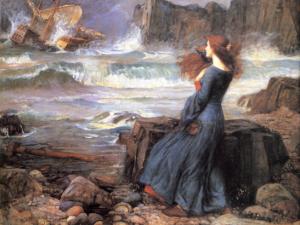The Rules:
In a live reading, I live my life while reading a book and post my unedited (actually lightly edited) thoughts as I go. I then end with my final thoughts and this stands as the “review.”
Thoughts Before Reading:
If a free book comes in the mail, it must be acknowledged. Sarah Palin sent me an autographed copy of her new book, though that is not enough to buy me, it is enough for me to say “thank you.”
I was disappointed in her first book, so I dread reviewing this one. I want to like Sarah Palin and once had great hope for her political future. Sadly, the years have not been kind to my feelings regarding her work habits and her intellectual discipline.
I have come to fear that she is not trying: she is one to whom much has been given, but failed at the great requirements of the gift.
And yet so many people have lied about her and her enemies are often a toxic mix of misogyny, Christophobia, and paranoid fantasies that it is hard to give up hope. Christmas books not written by Dickens are not a class of literature that has produced great efforts, but hope springs eternal even in winter.
First Impressions:
This is a lovely little book for the end table containing short chapters and family pictures. The back of the book quotes Palin: “If I’m for Christmas, it’s only because I’m for Christ . . .”
And this is promising. Gone is the overblown style of her first book: this sounds like Palin and (as in her speech at the Republican Convention in 2008) that can be very good.
Introduction
Palin and I are the same age and so the pictures work particularly well for the late forties or early fifty-something crowd. This is a book pitched for the “youth of old age.”
Uh oh. When it comes to snow, I discover it is something that Palin “ate with her sisters.” I hope the FBI is not going to read this book.
This book has adjective disease, more predictable than accurate to the situation: candy canes on the tree are “sticky sweet.” Really? Doesn’t the Palin family leave them in their wrappers? Do they nibble on them before hand? How do they get sticky?
Memories of Palin Christmas past are jolly. The family sounds like it knows how to do a traditional party.
The prose settles down when it doesn’t try to be literary, but the section is concluding with fears about the War on Christmas. This is jarring as we moved from a private parties to public celebration. I favor civil religion and an open public square, but this segue is abrupt. Why does the Palin family need public schools to sing carols to enjoy Christmas?
The introduction ends defensively, assuming the media sneering about the book. This is probably true. And I think the point is made (eventually) that Christianity is not a private faith. It can be a tolerant faith, but it is lived publicly.
And now to clean the house. (Break)
Chapter 1: Angry Atheists with Lawyers
(12:25)
First thought, I just debated Dan Barker!
Second thought: this book is getting much less jolly.
Palin describes an angry atheist and it all feels a bit unfair. I have a momentary sympathy for people caricatured and wonder if Palin has forgotten to “turn the other cheek.” And then I realize that I have met jolly atheists, but also angry ones with lawyers. These folk do exist and Palin graciously refused to name a particular one.
Fair enough.
Palin makes the good point (and one made too rarely) that Americans do not have the right to “not be offended.” Of all people, Palin knows this truth. She has been offended often and has had no right to silence the offenders.
Palin also points out to a weird “quirk” in the law that does allow “religious offense” to be considered. Actually, such a law might help traditional Christians if it were fairly applied, but these rules never are. Christians can be offended. Secularists assumptions (not secular, but secularist) often are treated as meaning simply “reason.” Example: simplistic confusions of philosophic naturalism with methodological naturalism in science are offensive when taught by science teachers with no philosophic credentials, but good look suing over that offense.
This is probably because religious ideas are now treated as “private beliefs” while secular ideas are treated as secular ideas.
Palin quotes an atheist lawsuit on the 9/11 Cross where it was claimed that merely putting it the museum caused the atheists “dyspepsia.” This was a delightful quotation as dyspepsia is the kind of Victorian word one does not read in print much anymore. If only the atheist would describe himself as a “valetudinarian” as a result of Christmas carols, my Victorian Christmas would be complete.
I think conservatives should ban uses of “lame stream media.” Can you say overdone? Governor Palin: many of us agree with you. Given your style, you never have to worry about being too nuanced.
The segue from a threatened Arkansas church, and Palin’s promise to tell us what to do about secular threats, to a picture of a Palin with a gun is trolling for criticism.
A Personal Reflection: Am I too wimpy? Or is Palin afraid to challenge her own version of ‘political correctness?’
This chapter made its point, but I take back the end table part. There is nothing wrong with a political book, but like a discussion of Obamacare over Thanksgiving dinner, this is “not safe for family” discussion if your family has diverse political views and does not know how to handle disagreements. Of course, a happy family should know how to discuss contentious issues, but I am not sure Christmas is the best time to learn the skill.
I agree with Palin, I think her point is pretty well made, I think her style bombastic, less about persuading than about rallying the troops. Nothing wrong with that, but this is not the Palin I saw at the RNC in 2008.
Do we need another jeremiad? Aren’t jeremiads easy to write? Of course, the opposite problem (very prevalent in blogging) is the Christian so sensitive to offense by his secular neighbor that Palin’s prose bothers him more than people promoting ideas that traditional Christians think are evil.
Christian readers should always discard the pundit whose only real accomplishment was growing up a traditional Christian and then worrying about how traditional Christians “came across.” Beware the latitudinarian! (Look: I got to use more Victorian prose!) Most educated Christians find themselves less likely to be “too political” or intolerant and more likely to find ways to sound reasonable to those they find attractive, but whose views are incompatible with their own.
They also do not write to persuade, but to be left alone in the back of the bus by the cool kids.
At least Palin is unafraid.
But isn’t the problem that Palin is “cut off” from helping the secularists by her style? Isn’t she the opposite problem? She is not afraid of offending the “cultural elites” and so does, but isn’t pushing her base to learn anything. On the other hand, some of us are more offended by her base, which loves Jesus, than with those who don’t.
We would rather denounce Palin as “not our sort of Christian,” than denounce any movie anywhere for being unchaste or vulgar.
As a Christian, I stand in solidarity with Palin in her traditional Christian beliefs.
As a Christian, I worry that Palin rarely challenges her constituency or risks offending them.
(And now for I return to work on HBU stuff.)
Chapter 2: Knowing the End from the Beginning
1:33 PM
Here is an odious reaction to Palin’s book, or any concern about Christianity and the public square, that arises in me: “If only Christians were as concerned about ’cause a,’ then like Pope Francis we would be heard.”
But of course Pope Francis is not being heard when he speaks: his views on ordination are mostly ignored.
And if my twitter feed is any indication (full of the Palin fan base), traditional Christians spend tons of time rallying to help the poor, end slavery, and educate.
Christians can do several things at once! Let’s give to the poor and oppose secularizing the public square. Let’s oppose bullying and a change in the marriage definition.
And now on to Palin’s solution:
Palin quotes Peter Hitchens, the late Christopher Hitchens (the angry atheist’s theistic brother). If Palin draws any attention to Peter Hitchens, she will have performed a worthy act.
Palin deals with Barker’s “Freedom from Religion Foundation” in this chapter. Sometimes one wonders if the FFRF is a kind of atheistic money machine . . . allowing a few atheists to live well on endless lawsuits to protect the faithless. Palin has a good target in view.
Palin makes a very good point in this chapter. Keep fighting for your right to display Christmas scenes. Ignore this weird double standard: a group attacks something Americans have been doing for sixty years. They win in the first round. The traditionalists fight back in court. Kowtowing Christians then worry that we are “obsessed” with the wrong things.
In other words, the first one sued is made out the “aggressor” or “obsessed” for exercising his constitutional rights.
Is there a “war on religion” in the USA?
No, if the religion stays inside churches or homes (mostly.)
Yes, if the religious wish to organize and run their communities and businesses according their religious beliefs. I have read Christian commentators offended with Hobby Lobby, a family run corporation, for wishing to practice their faith in their business. These same folk say nothing about groups like the Amish long allowed to run their lives according to their out-of-the-mainstream religious beliefs.
I am proud to work at HBU: a university that insists on practicing Christianity in public. We will never say Caesar is Lord, since we have no king, but King Jesus.
Chapter 3: The Real Thing
1:46 PM
This chapter begins with one of my favorite Dickens’ quotations: “For it is good to be children sometimes, and never better than at Christmas, when its mighty Founder was a child Himself.”
Aside: those secularists thinking Dickens’ created secular Christmas haven’t read all his Christmas stories or his Christmas Carol carefully. Try Cricket on the Hearth for a bold defense of family values (that Dickens should have lived) or The Haunted Man for a truly inspiring Christian tale dealing with age, memory, and poverty.
I agree that any company trying not to offend by hiding the Christian roots of Christmas is stupid.
I also worry (with Charles Schulz’ Charlie Brown) that Christmas is too commercial.
This chapter hints at the tension, but misses a bit chance to address it more directly. I like the grownup Palin tradition of “one gift.” In fact, the whole chapter feels padded with a few anecdotes to many about the war on companies saying “Merry Christmas.” We get it Governor.
But wait: the chapter ends by pointing out that “gifting” is fine, but the commercialism isn’t. There is an assault on finding meaning in presents or “getting the right gifts.” There a much needed snark at “realistic” diamond ideas.
Well, done.
(I pause to eat lunch.)
Chapter 4: True Grit
First, 1986 Sarah Palin and Hope (the Fairest Flower) had the same hair cut.
Second, both Todd Palin and I over married.
Third, Palin is right we must “learn to keep Christmas well.”
While the chapter starts with more cultural war stories, it focusses on the brave (God bless Hobby Lobby and the Green family!) and the best way to celebrate the coming of Jesus.
We are not (after all!) against giving gifts: just in reducing the Holy Day to gift giving.
Note: I think the Palin family and the Reynolds family read from the same Christmas “Golden Book” every year. God bless “Golden Books.”
Palin is now speaking a good word. She points to Mary and the need to ponder the Christ in our hearts. The prose is moving and spare. I think she means it. She is right to point out (as few do) that Christmas is not just the time that companies make the most money, but charities are given the most. People open up their wallets to others . . . religious people especially.
Palin demonstrates through a story about her service serving food in a hard year that a message of Christmas is: mercy.
Palin’s story about hearing of her daughter’s pregnancy is honest. She sounds harsh in it and unvarnished: I bet it is true. And such honesty about a hard day on which she lacked Christian mercy is very good in this Christmas book. I really liked this chapter as it pointed out that we decorate not to hide the grit, but in the midst of the grit.
The swaddling clothes after all, a priceless relic of Christendom, were displayed in a manger full of cow food.
We need more messages like this Palin chapter: tell the truth about life, acknowledge the bad, and celebrate the good.
Nobody thinks Palin perfect, but this is the person so many love. She is sometimes false, willing to be handled, but she is also real. She is real in ways that few politicians ever are.
Chapter 5: Bad News, Good News
2:38
This chapter starts by making the good point that freedom is a good, but that no democracy can withstand a bad people.
Good government requires moral goodness. (At one point, Palin digresses into sloganeering and says: “The point is, freedom is the only answer.”) But that was not her point, she was (until that catch phrase) saying something better: “Freedom is good for a moral people. Immoral people get tyranny.”
Palin should be banned from using conservative catch phrases and her common sense would show up plainly.
I would argue that her first example in the book is about “privatizing” faith, not stigmatizing it. That is an important difference. Palin should get this right to avoid giving an easy out to her opponents. After all, her point is powerful: intrusive government leaves less to the private world and then pushes religion there.
Palin argues that “words and phrases” matter and that a culture only allowed “secular” phrases in public (which would be foreign to the history of our Republic) would secularized. She is right to point out that the history of secularization is not promising to liberty for religious people.
Yet one wishes Palin would take her own words more seriously. Her greatest weakness is when she falls into tropes or conservative talking points.
Palin turns to the Christian message of “bad news for modern man” and once again finds her footing. She does tell a hard home truth: we aren’t that great. We are unloving and licentious. Our morals are decaying not just because of big government, but because we are hedonists. Well done, Sarah Palin.
I believe her Christian faith has educated her pretty well, but her political party did not do as well!
And now Palin turns her guns on “crony capitalism” and I cheer loudly! Well done! Sarah Palin is attacking the overly comfortable assumption that “business” is always virtuous that is found in the more unthinking parts of the right.
“We need to change,” Palin says in so many words. We are living badly and real Christianity confronts our sin.
Palin is right.
Read it again: Sarah Palin is very right.
Chapter Six: Seeing Double. . . Standards
3:00 PM
Sarah Palin channels her inner Dickens’ and presents two views of Christmas future: a liberal dystopia and a better future.
In the dystopia section, Palin accuses herself of being “a walking cliche.”
Right. Break that habit Governor. You can.
The odd thing is that her vision of a “future” university is much more like actual state schools than it is not. This section could happen today at Rice. The only difference is that HBU is still allowed to be an alternative in 2013. Palin is actually touchingly behind the times when to comes to University culture. She later gives us examples to convince us that “this is happening,” but they are mostly older (over five years).
Things are further along than Palin thinks. When Sarah Palin is too moderate, things are bad.
Her faith is much more hated on University grounds than she knows.
In her better version of the future, both atheists and Christians are alive and well on campus in University sanctioned events. I love the fact that a hirsute Romney has just become President after six tries. This part of the book is actually funny . . . and in a good way.
Chapter 7: Who’d Make Up a Story Like That?
C.S. Lewis makes one of his several appearances in the book. Palin often quotes Lewis.
This chapter is dominated by stories of imperfect Palin’ Christmas times.
“Christmas gently encourages you in your weakness.”
That is a good message and the chapter’s anecdotes help.
Chapter 8: Recipes
These look good.
Final Thoughts
This is an odd Christmas book: a mix of the political, cultural, and religious, but I thought it worked well. And after all Charles Dickens always wrote Christmas books that were an odd mix of the political, the cultural, and the religious.
This is far and away the best written of the Palin books . . . and it has a decent message. The books is “stretched” . . . there is not enough content for the length, but still the basic points are sound.
Religious majorities have rights. Christianity cannot be privatized. Christmas is more than gift giving.
It has flaws, mostly the sloganeering and the early overuse of stock adjectives.
Who should buy this book? Any Palin fan doesn’t need to be told to buy it. Palin haters might to stock new paranoid beliefs (which recipe has Palin actually cooked herself and eaten . . . can she prove it?).
Sadly, there is not enough new ground for anyone else to do so. It is too political for a “feel good” book, but not political enough for a governance book. But: it is a Palin book and that means it matters.
Palin still matters: haters prove it. Maybe everyone should read it, because fifty is too young to relegate Palin to Conventions Past.
It is a Palin book and so like the former Governor of Alaska: it is frustrating, combative, interesting, frank, and at times compelling. It made me glad I voted for her in 2008.
Merry Christmas, Sarah Palin.
















